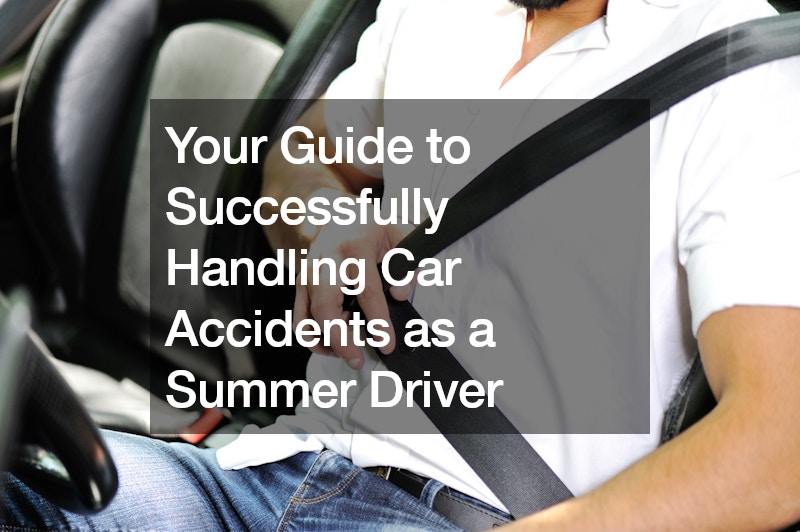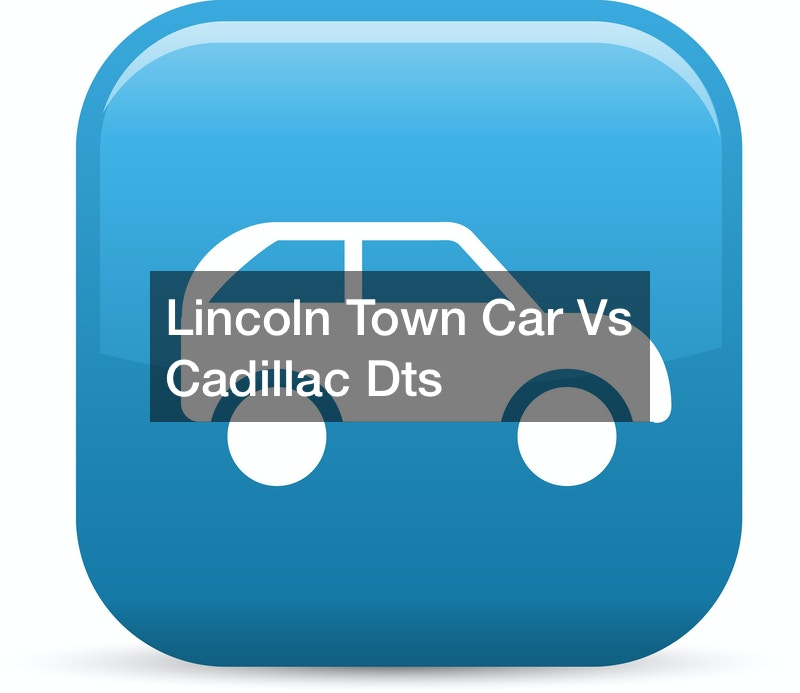Your Guide to Successfully Handling Car Accidents as a Summer Driver


Summer driving becomes more prevalent nationwide as the days grow longer and temperatures rise. While many look forward to road trips, beach excursions, and family vacations, it’s crucial to recognize that summer driving comes with challenges and hazards. This comprehensive guide aims to provide essential information on understanding summer driving hazards, ensuring your car is summer-ready, adjusting your driving habits for hot weather, and what to do in an accident. Whether you’re a seasoned summer driver or hitting the road during the warmer months for the first time, this guide will help you stay safe and prepared.
Understanding Summer Driving Hazards

Summer driving brings unique hazards that every driver should be aware of. One of the most common challenges is the increased traffic due to vacations and road trips. This uptick in traffic can lead to more accidents and the need for auto repair services. Hot weather can also cause wear and tear on your vehicle, leading to breakdowns and a higher demand for local auto repair.
The summer heat can also impact driving conditions. For instance, it can cause the pavement to become more slippery due to melted tar. Furthermore, glare from the sun can reduce a driver’s visibility, increasing the likelihood of accidents. Summer drivers should always be cautious and prepared for these conditions. Carrying essential items like sunglasses and checking the condition of your car’s tires regularly can help mitigate some of these hazards.
Finally, construction projects often increase during the summer months, leading to road closures and detours. These construction zones can be hazardous for drivers, especially if they are unfamiliar with the area. Being aware of these potential hazards can help drivers plan ahead, thereby reducing the risk of accidents and the subsequent need for auto repair services.
Ensuring Your Car Is Summer-Ready
Before hitting the road this summer, it’s crucial to ensure your vehicle is in top shape to handle the heat and increased driving demands. Auto body shops can provide a thorough inspection of your vehicle, focusing on areas most affected by summer conditions. This includes checking the coolant system, air conditioning, and tire pressure. Ensuring that your car is summer-ready can save you from unexpected breakdowns and costly repairs.
Drivers should also pay attention to their car’s battery. The summer heat can cause the fluid in the battery to evaporate, leading to a decrease in battery life or even a complete failure. Having your battery checked and replaced at a local auto repair shop can prevent this issue. Additionally, checking and replacing windshield wipers is essential for dealing with summer rainstorms.
Another aspect to consider is the condition of your brakes. Over time, the heat can cause brake pads to wear down faster. Regular maintenance and inspections at a car repair garage can ensure that your brakes are in optimal condition. Auto body shops can also help with minor body repairs that can prevent larger issues. Proper maintenance is key to being a responsible summer driver.
How to Adjust Your Driving Habits for Hot Weather
Driving in hot weather requires adjustments to ensure safety and vehicle performance. One important habit is to avoid driving during peak heat hours, typically between 10 AM and 4 PM. The intense heat can cause tire blowouts and overheating. Therefore, drivers should aim to travel during the cooler parts of the day. Local auto repair shops recommend keeping an eye on the temperature gauge while driving to prevent engine overheating.
Another adjustment involves staying hydrated and taking regular breaks on long trips to prevent driver fatigue. Heat can quickly lead to dehydration, impacting your focus and reaction time. Divers should carry water and plan rest stops along their route. Local auto repair experts also suggest keeping an emergency kit in the car, including water, snacks, and a first-aid kit, to prepare for roadside emergencies.
Furthermore, it’s important to maintain a safe following distance. Hot weather can impact the efficiency of your vehicle’s braking system. A greater distance allows you more time to react to sudden stops, reducing the risk of rear-end collisions. Summer drivers should also avoid using cruise control on hot and slippery roads, as it can delay manual control if you need to maneuver quickly. Adjusting these driving habits can greatly enhance your safety on the road.
What to Do Immediately After a Car Accident

No summer driving guide would be complete without addressing what to do immediately after a car accident. First and foremost, ensure that everyone involved is safe and seek medical attention if needed. Calling local car repairs can provide immediate assistance and help with assessing any immediate vehicle damages. After checking for injuries, move your vehicle to a safe location if possible, to avoid further accidents.
Next, it’s essential to document the scene of the accident thoroughly. Take photos from multiple angles, capturing the extent of the damage and the surrounding area. This documentation will be invaluable when filing an insurance claim. If you’re unsure how to proceed, consulting a vehicle accident attorney can provide clarity and ensure that your rights are protected.
Finally, information should be exchanged with the other driver involved. This includes names, contact information, driver’s license numbers, and insurance details. Having this information readily available can streamline the process when contacting your car insurance company. Being prepared and knowing these steps can help drivers navigate the stressful aftermath of an accident efficiently and effectively.
How to Collect and Document Evidence After an Accident
Collecting and documenting evidence after a car accident is critical to your insurance claim and potential legal proceedings. Start by taking clear photos of all vehicles involved, capturing the damages and the license plates. Photographing the surrounding area, including traffic signs and road conditions, is also helpful. This visual evidence can support your case when dealing with your car repair garage or insurance company.
Besides visual evidence, gather witness statements if anyone saw the accident occur. Ask for their contact information and a brief account of what they observed. This can be particularly useful if there are discrepancies in the testimonies of those involved. Summer drivers should recognize the value of third-party statements when filing a claim or consulting a vehicle accident attorney.
Additionally, keep detailed notes about the accident. Write down the date, time, location, and any relevant weather conditions. Include any conversations you have with the other driver, witnesses, or police officers. This information will be essential when working with local auto repair services or filing an accident report with your car insurance company. Diligent documentation is a driver’s best ally in resolving post-accident issues efficiently.
Understanding Your Insurance Coverage for Summer Driving
Knowing your insurance coverage is crucial for summer drivers. Before embarking on any trip, review your policy to understand what is covered in the event of an accident. Different car insurance companies offer varying levels of coverage, and it’s essential to know your policy’s specifics. This knowledge can save you from unexpected expenses and provide peace of mind while driving.
Most standard policies cover collision and liability, but you may need additional coverage for comprehensive claims, covering damages from non-collision incidents like theft or weather-related damages. Contacting your auto insurance provider to discuss your summer driving plans can help you determine if you need to adjust your coverage. This proactive step ensures you are adequately protected.
Beyond the basics, some policies offer extras like rental car reimbursement or roadside assistance. These can be particularly useful during summer travels. Knowing what your policy includes can help drivers better manage the aftermath of an accident or breakdown. Being informed about your car insurance coverage is a key component of safe and responsible summer driving.
How to File an Insurance Claim After an Accident

Filing an insurance claim after an accident involves several steps, each of which is crucial for a successful outcome. Begin by notifying your car insurance company as soon as possible. Provide them with all necessary details, including photographs of a potential auto accident injury, witness statements, and the police report. This initial notification sets the stage for a smoother claims process, allowing drivers to focus on repairs and recovery.
Next, coordinate with your auto repair garage to get an estimate. Your insurance company will likely want to assess these damages themselves or through a third-party inspector. Keeping close communication with both your repair shop and insurance adjuster ensures that you are fully aware of the costs and timeline involved. Summer drivers should prepare for possible delays and always record all communications.
Lastly, follow up with your insurance provider to track the progress of your claim. Ask for updates and ensure that all submitted documentation is complete and accurate. If you encounter any disputes or issues, seeking advice from a vehicle accident attorney can be beneficial. Being proactive and organized throughout the claim process helps drivers navigate the complexities of insurance claims more effectively.
Tips for Communicating with Insurance Adjusters
Communicating with insurance adjusters can be daunting, but it’s an essential part of the claims process. Start by being honest and transparent about the details of the accident. This builds credibility and facilitates a smoother evaluation. Adjusters are trained to identify inconsistencies, so providing accurate information from the beginning is crucial for summer drivers.
It’s also wise to document every interaction with the adjuster. Keep records of phone calls, emails, and any other correspondence. This can protect you from misunderstandings or disputes about the claim. Drivers should always maintain a paper trail to back up their version of events and ensure all agreed-upon terms are honored.
If you don’t agree with the adjuster’s assessment, don’t hesitate to provide additional evidence or seek a second opinion. Sometimes, getting an independent estimate from your trusted auto body shops can support your case. Your auto insurance provider should be willing to review this new information. Effective communication and a proactive approach can make a significant difference in resolving claims to the driver’s satisfaction.
What to Do If You’re Found at Fault for the Accident
Being found at fault for an accident can be challenging, but knowing the proper steps can help manage the consequences. First, accept responsibility and cooperate with all involved parties, including your car insurance company and law enforcement. Honesty and prompt action can help mitigate the impact on your insurance premium and legal standing.
Next, consider consulting a vehicle accident attorney to understand your legal options and responsibilities. They can provide guidance on dealing with claims, settling disputes, and protecting your rights. Summer drivers should not underestimate the value of legal advice in navigating fault-related complications.
Finally, focus on taking corrective measures to avoid future accidents. This could include defensive driving courses, regularly servicing your vehicle at reputable auto body shops, and reviewing your driving habits. Learning from the experience and making necessary adjustments can improve your safety and that of others on the road. Proactivity and responsibility are key for any driver found at fault in an accident.
How to Manage the Financial Implications of a Car Accident

Managing the financial implications of a car accident requires careful planning and resourcefulness. Start by thoroughly reviewing your insurance coverage to understand your financial responsibilities. Knowing your deductible and any potential out-of-pocket expenses can help you budget effectively. Drivers should be prepared to manage these costs while awaiting the insurance payout.
Next, work closely with your auto repair garage to get the best possible repair estimate. Compare prices and services from multiple local auto repair shops to find the most cost-effective solution. Being well-informed can help you make financially sound decisions. Additionally, inquire about auto part services that might offer quality used parts, which can be a cost-effective alternative to new parts.
If the financial burden becomes overwhelming, consider seeking professional financial advice or setting up a payment plan with the repair shop. Some auto body shops offer financing options to help spread the cost over time. Managing the financial aspects of a car accident requires diligence, but with the right approach, drivers can navigate these challenges effectively and regain their financial stability.
Summer driving presents unique challenges and opportunities. By understanding summer driving hazards, ensuring your car is summer-ready, adjusting your driving habits, and knowing how to handle accidents, summer drivers can enjoy a safer and more enjoyable driving experience. Preparedness and proactive measures are key to managing the risks associated with summer driving. Whether you’re addressing vehicle maintenance through auto body shops or dealing with post-accident procedures, this guide provides the essential insights needed for a well-rounded approach to summer driving. Stay informed, stay safe, and have a great summer on the road.


